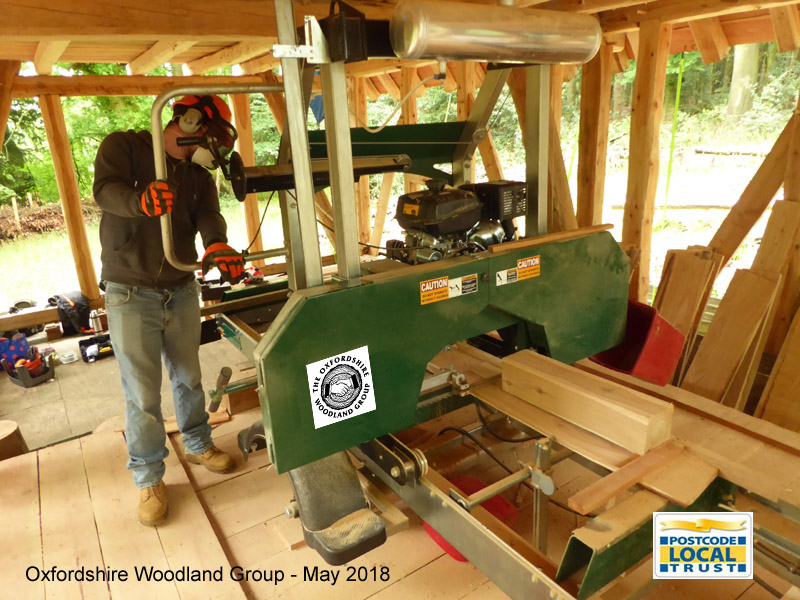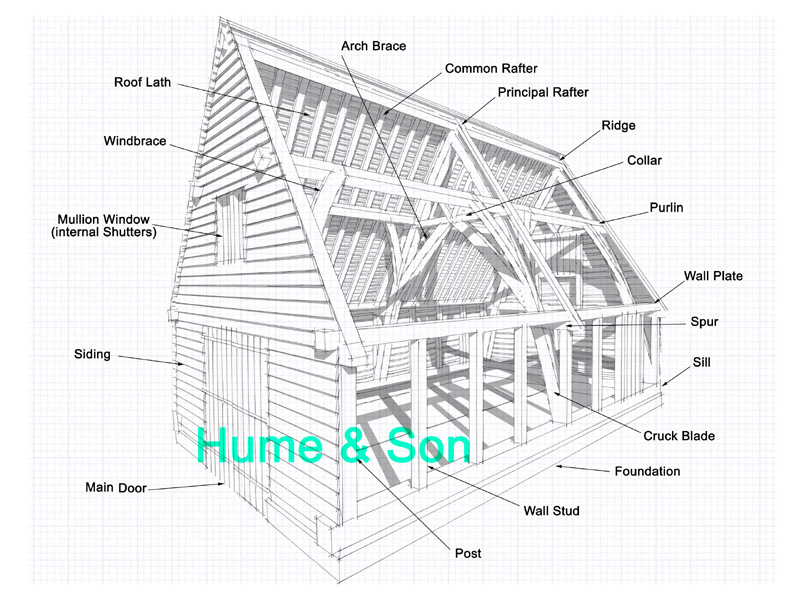Building with Timber in Small Woodlands
The Oxfordshire Woodland Group adopted a pro-active approach to supporting small woodland owners by encouraging them to manage and work their woodlands.
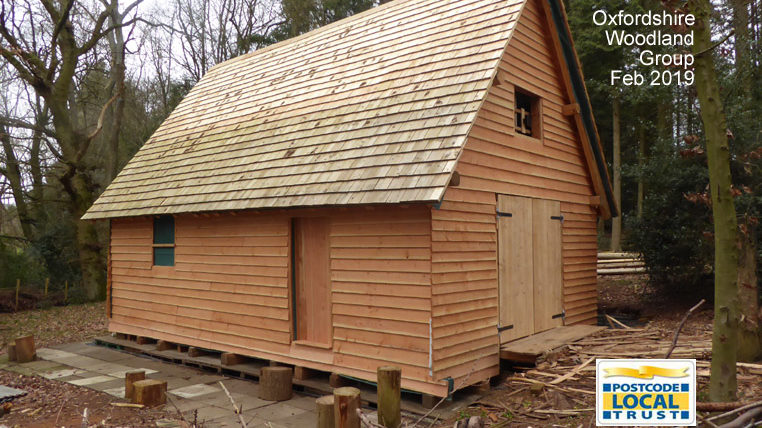
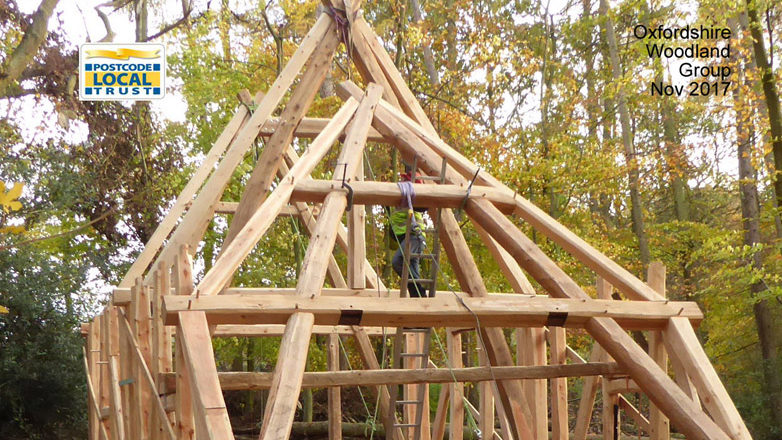
Written by By Ken Hume B.Sc. M.Sc. P.Eng. C.Eng. M.I.Mech.E.
In 2014 The Oxfordshire Woodland Group (OWG) decided that the time had come to move away from employing a full-time professional forester, acting as a project manager that provided free advice to Oxfordshire’s 2500 small woodland owners. Instead, a more pro-active approach was adopted whereby The Group would provide focused funding to deserving individuals to help them gain a foothold onto the forestry/woodland based career ladder (Hume, 2017).
This strategy aims to increase the resources available to small woodland owners thereby helping and encouraging them to manage and work their small woodlands. In addition, it was decided that The Group should endeavour to lead by example and so a series of initiatives were considered that would demonstrate to woodland owners in practical terms what can be done to actively manage and in doing so help to increase the capital value of their woodland asset.
In the first instance a small group of OWG Fellows was assembled under the leadership of The Group’s Executive Trustee to undertake various building works using only timber harvested in small woodlands. Each of the Fellows had a different but overlapping set of skills that would hopefully bring synergy to the Group’s pilot project plan to build a woodland based community facility in one of the OWG’s demonstration woodlands in South Oxfordshire.
Work undertaken by Hume & Russell in 2012 to survey a small [sub 3ha] woodland that was previously owned by Kenneth Rankin – founder of The Economic Forestry Group (Steers, 1996) produced an inventory of the trees growing in that woodland and this was used to assess the suitability of each type and standing volume of trees growing in the woodland for use in timber building construction.
Cruck timber-framed building
A survey of existing local vernacular timber-framed buildings in the hamlets and villages close to Rankin’s woodland was undertaken by Corbishley & Hume in 2015 with this revealing a higher than average presence of cruck timber-framed buildings in this area of South Oxfordshire.
The cruck buildings were dated both stylistically and also more precisely by dendro-dating to have been built from the mid 14th to mid 15th century.
Given that this type of building has a proven potential lifespan in excess of 600 years it was decided to design and build a cruck timber-framed barn in Rankin’s woodland. This approach helped to establish pro-active management of this small woodland and also provided a forum (web based & actual) that demonstrated the woodworking techniques employed that afforded employment training opportunities and then later for the wider community involvement in usage of the barn.
Permitted development approval
The new cruck barn was designed by Hume & Son based on established local custom and practice and then permitted development planning approval was sought in December 2015 to construct the new barn with this being granted in January 2016 without any objections being received. The barn was to be a two- bay full cruck barn with a shingle roof enclosed with feather edged sidewall cladding.
Selecting and harvesting trees
A plan to select and harvest trees was progressively made by Hume, Keighley, Jarvis & Hunter using a continuous cover forestry approach that had to respect at all times the Forestry Commission’s 5m3 quarterly felling allowance for which no felling licence is required (Hume, 2014).
Work was undertaken over the following two years by Keighley, Jarvis & Hunter to fell and extract suitable trees for conversion by hand hewing. A hewing axe can be purchased for about £150 and so several hewing axes were purchased and employed in true vernacular fashion to convert all of the components required to make the cruck timber-frame.
Building the cruck frame
The cruck frame was made and erected by OWG Fellows Currie, Griffin, Hunter, Jarvis & Russell together with other occasional volunteers all of whom worked on a part time basis (Hume, 2019).
Grant funding for mobile sawmill
After raising the frame in autumn 2017, OWG applied for and obtained grant funding from The Postcode Local Trust to purchase a small mobile sawmill (Hume, 2018) with this used over the following year to make and then fix 2500 roof shakes (Wilbur, 1992) together with approximately 2000 board feet of sidewall feather edged cladding (Hume & Russell, 2018).
2019 RFS Training course
The Oxfordshire Woodland Group has agreed to run a joint training course in July 2019 as part of the annual RFS training course programme. RFS & OWG members, small woodland owners, professional foresters, woodland practitioners, planning officers & community leaders will now be able to benefit from this example of how to build with timber growing in a small woodland.
For more details and to book go to www.rfs.org.uk/events/training-courses/
References
CORBISHLEY, T., and HUME, K. F., 2015. Medieval Cruck Buildings of the Checkendon Area in South Oxfordshire. (Research Paper). Checkendon History Society.
HUME, K. F. and Russell, H.L., 2012. Uses of Timber other than Oak in Timber-Framed Building Construction (Research Paper). Bournemouth University.
HUME, K. F. and Russell, H.L., 2018. Survey of a 14th century cruck barn at Letcombe Bassett, Oxon. Oxfordshire Buildings Record.
HUME, K. F., 2014. Continuous Cover Forestry Course. Woodland Heritage, 2014, 86-87.
HUME, K. F., 2017. Oxfordshire Woodland Group – “Renaissance”. Woodland Heritage, 2017, 82-83.
HUME, K. F., 2017. Woodland Cruck Barn – Part 1 – “In The Begining”. Woodland Heritage, 2017, 98-99.
HUME, K. F., 2018. A Woodland Cruck Barn – Part 2 – The Raising. Woodland Heritage, 2018, 53-54.
HUME, K. F., 2019. Woodland Cruck Barn – Part 3 – “Rankin’s Legacy”. Woodland Heritage, 2019, pp-pp(tbc).
SOBON, J., 2007. The English Barn in America – Part V. – Finishing the Barn. Timber Framing, No 84, 9-11.
STEERS, D., 1996. Forestry People – [K. N. Rankin] Father of Modern Forestry. Timber Grower, Summer 1996.
WILBUR, C. K., 1992. Homebuilding and Woodworking in Colonial America. Old Saybrook, CT. USA : Globe Pequot Press.
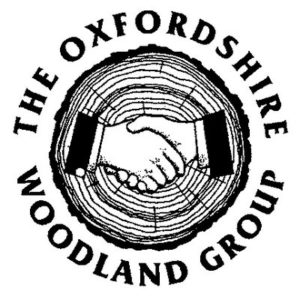
Oxfordshire Woodland Group www.oxfordshirewoodlandgroup.co.uk
or email trustees@oxfordshirewoodlandgroup.co.uk
